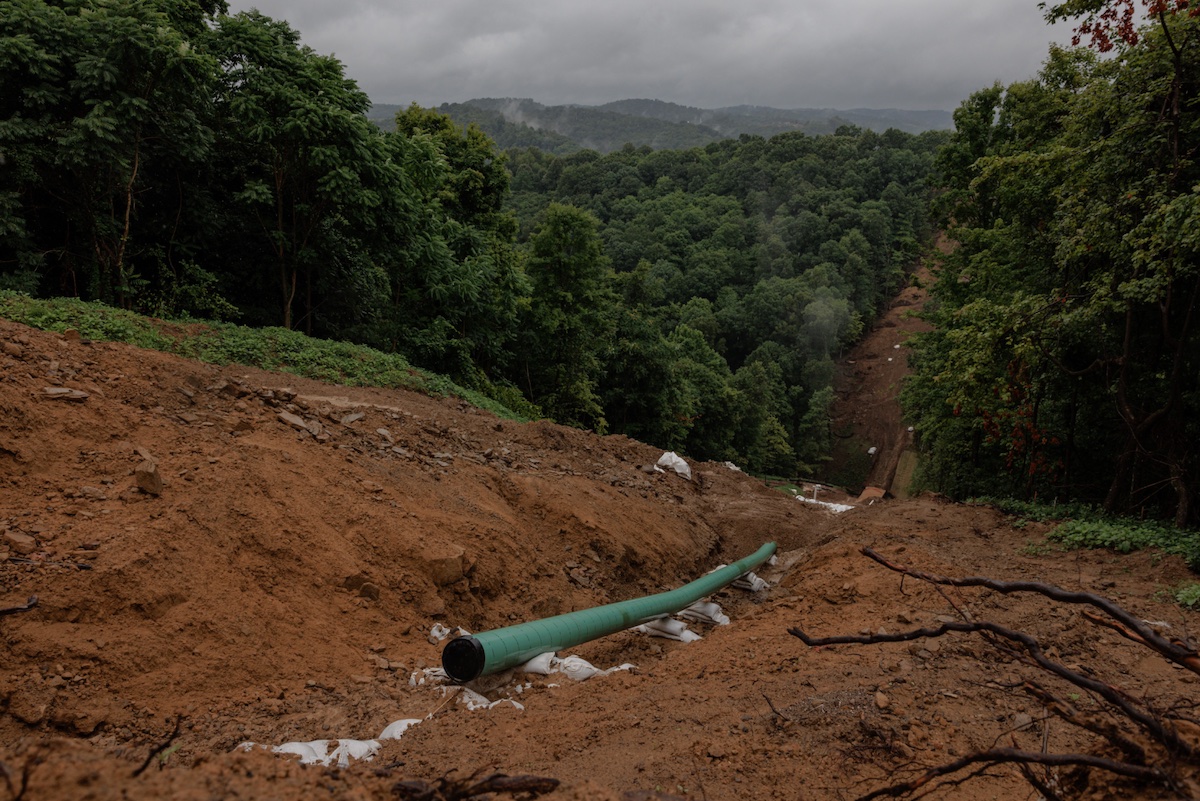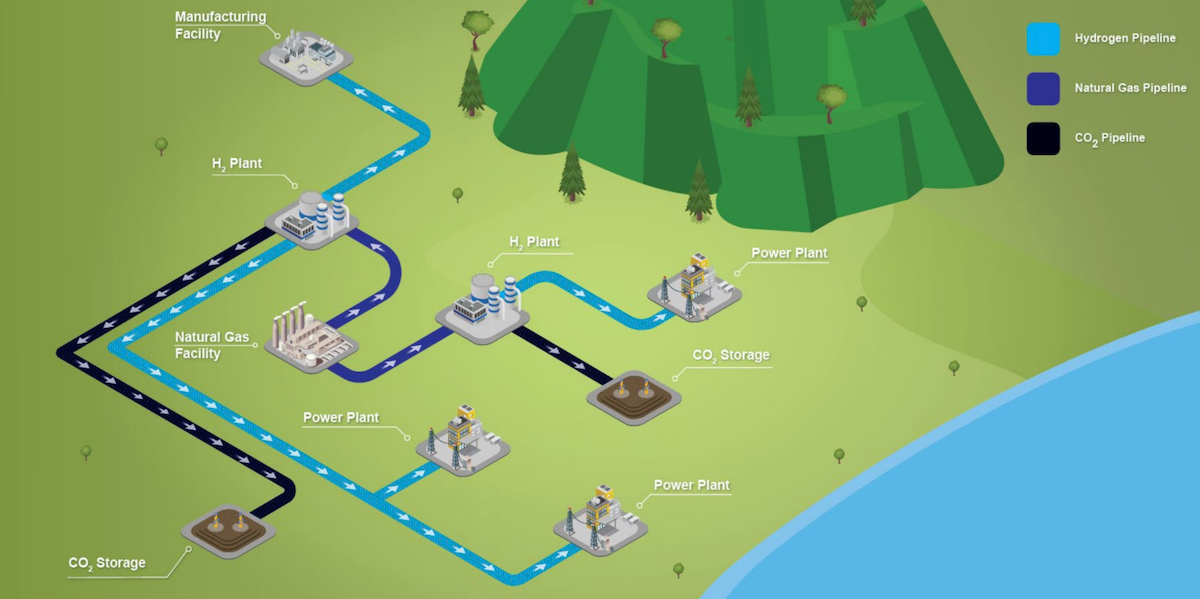As Pennsylvania vies for a slice of $8 billion in federal funding to build out a hydrogen hub, elected officials and interest groups representing industry, labor and environmental advocacy are jockeying for policy that could shape how the energy technology is deployed in the commonwealth.
In late 2022, former Gov. Tom Wolf signed off on legislation that implemented tax incentives for hydrogen production. Act 108 passed with bipartisan support, though it faced criticism for being rapidly pushed through the legislature without public input.
Just over eight months later, as the Department of Energy prepares to decide which hydrogen hub proposals get the green light, new legislation aims to align hydrogen development with decarbonization goals.
The legislation was authored in part by a member of the Natural Resources Defense Council (NRDC), an environmental advocacy group whose regional director, Jackson Morris, chairs Gov. Josh Shapiro’s working group on climate change.
“Hydrogen can be used to get us to carbon neutrality or it can be used to perpetuate fossil fuels and keep us from getting to carbon neutrality, depending on how we approach it,” said Rep. Greg Vitali, D-Delaware County, who chairs the House Environmental Resources and Energy Committee.
But his House Bill 1215 hit a legislative speed bump last week after Shapiro’s administration and others asked for time to review it.
The bill faces criticism from industry and labor advocates who say it is at odds with a bipartisan majority of the Pennsylvania legislature and runs counter to the federal government’s goal of building hydrogen hubs nationally, one of which must be fossil-fuel based.
“We should be doing everything we can to use the great energy asset we have underneath our feet,” said Ken Zapinski of Pittsburgh Works Together, an organization that works with industry and labor interests.
But climate advocates say a hydrogen hub must respond to a changing climate.
“There is a tension between making the hydrogen hubs happen and making it happen in a way that gets to carbon neutrality,” said Vitali. “It’s important to educate people that hydrogen hubs could be something that helps — or hurts — the environment.”
‘Massive loophole’ or necessary option?
The NRDC called Act 108 “deeply flawed” and criticized the 2022 legislation for being brought to a vote “in less than 24 hours without a single hearing or opportunity for public input.”
The NRDC also said a subsidy created by the act for hydrogen production using natural gas is a “massive loophole.”
Vitali’s bill, which was written in part by the NRDC’s Pete Budden, is designed to give greater guidance to how hydrogen tax credits are allocated in the state.

A natural gas pipeline under construction in rural Greene County. (Photo by Quinn Glabicki/PublicSource)
The bill would amend Act 108 so that hydrogen producers only get the tax break if the hydrogen is produced with low greenhouse gas emissions (including methane leaks in the case of so-called blue hydrogen made from natural gas). “Which means with regard to blue hydrogen, about 90% of the CO2 [carbon dioxide] is being captured,” to trigger the tax break, offered Vitali.
The bill also adds an enhanced tax credit for the cleanest “green” hydrogen and restricts tax credits to areas where electrification is not possible, like steel and cement making.
“The broad goal is to make sure that we’re incentivizing low-CO2 emission hydrogen and only for hard-to-decarbonize uses,” said Vitali.
HB 1215 would be “a really good example of how to do it right,” said Budden, who leads NRDC’s state- and regional-level hydrogen policy work.
At the national level, the U.S. Treasury Department is developing guidelines for a federal hydrogen tax credit stemming from the Inflation Reduction Act. Colorado passed the first state green hydrogen standards this year.
Could Pennsylvania follow suit?
Vitali said HB 1215’s prospects hinge on the blessing of the Shapiro administration, which walks a fine line between support of climate-related decarbonization and the interests of organized labor and industry. The legislation was set to be considered in committee last Tuesday, but the vote was postponed when the Shapiro administration and others raised concerns, Vitali said.
The Shapiro Administration did not respond to PublicSource’s requests for comment on the specifics of their concerns with HB 1215.
Vitali’s approach has drawn open criticism from advocates for industry and labor.
“I don’t think it’s good policy,” said Zapinski, whose organization includes among its partner organizations gas giants Peoples and Energy Transfer.
Federal legislation dictates that at least one hydrogen hub must use fossil fuel as a feedstock and at least two must be located in natural gas-abundant regions, conditions that won the support of West Virginia’s Democratic Sen. Joe Manchin.
“Folks who are opposed to hydrogen from natural gas, they’re certainly entitled to their opinion,” said Zapinski. “But the Biden administration and Department of Energy have made it clear this is a technology they want to see explored.”
‘Green’ and ‘blue’ hydrogen
At a House Environmental Resources and Energy Committee hearing in late May, members heard testimony that questioned the viability of natural gas-based blue hydrogen as a decarbonization tool.
Hydrogen can be transported, stored and ultimately combusted with zero carbon footprint. But it takes energy to separate the hydrogen from other molecules.
Today, 96% of global hydrogen production is powered by fossil fuels and is known as gray hydrogen. Hydrogen separated from water using electricity from renewable sources is known as green hydrogen. Blue hydrogen would be made with natural gas, and the resulting carbon emissions from that process would be captured and buried deep underground.
“Blue hydrogen is not a solution,” Robert Howarth told the committee. An earth systems scientist at Cornell University and a member of the New York State Climate Action Council, an agency responsible for implementing New York’s climate action plan, Howarth authored 2021 research which found that “far from being low carbon, greenhouse gas emissions from the production of blue hydrogen are quite high.”
“You’re better off just burning natural gas,” he told the committee.
Howarth admitted that vast stores of methane in the Marcellus shale are an attractive resource, but cautioned that the sizable greenhouse gas footprint undermines its viability when it comes to decarbonization.
“The key is green hydrogen and making that green hydrogen from renewable electricity,” he concluded.
The proposed Western Pennsylvania hydrogen hub, though, the Decarbonization Network of Appalachia (DNA), is indeed betting on blue.
Pennsylvania lags when it comes to solar and wind, and advocates for blue hydrogen argue that there just isn’t enough renewable energy to support green hydrogen. “Green hydrogen is based on the premise that there would be enough renewable energy produced,” said Tom Murphy, a senior managing director of Team Pennsylvania, a nonprofit serving as the formal applicant for the DNA proposal. “We’re looking at a viable alternative here that is commercially available now.”

Conceptual illustrations of a proposed Decarbonization Network of Appalachia hydrogen hub show a network of natural gas, hydrogen and carbon dioxide pipelines that connect hydrogen production facilities, power plants, manufacturing facilities, and carbon dioxide storage locations. (Image via PublicSource)
For organized labor, the color of the hydrogen hardly matters as much as the jobs it provides, and for the boilermakers in particular, blue hydrogen represents economic opportunity. “We strongly support it because of the opportunity it provides for our members,” said Martin Williams, national coordinator of state legislative affairs for the International Brotherhood of Boilermakers.
Thousands of boilermakers are going to be needed to build the hydrogen economy, he said.
The DNA proposal competes with 32 others nationally, including two others in the state: the Mid-Atlantic Clean Hydrogen Hub (MACH2) in the east, and the Appalachian Regional Clean Hydrogen Hub (ARCH2). All three were given notices of encouragement by the Department of Energy, which is set to announce which six to 10 projects will receive funding this fall after a lengthy and opaque process.
It remains to be seen what state and federal policy will govern and incentivize projects that at this stage are only ideas; a hydrogen hub has never been built before.
“If we really care about climate change, we ought to be really developing wind and solar and hydro, and there are so many more things that are much more cost effective in getting us to carbon neutrality,” ventured Vitali. He pointed to Pennsylvania’s relatively apathetic renewable energy goals and stalled participation in the multi-state Regional Greenhouse Gas Initiative.
“I appreciate the fact that hydrogen should be part of our future,” Vitali said. “But frankly, I’m a little skeptical.”

This story was originally published by PublicSource, a news partner of Technical.ly. PublicSource is a nonprofit media organization delivering local journalism for the Pittsburgh region at publicsource.org. You can sign up for its newsletters at publicsource.org/newsletters.
Before you go...
Please consider supporting Technical.ly to keep our independent journalism strong. Unlike most business-focused media outlets, we don’t have a paywall. Instead, we count on your personal and organizational support.
Join our growing Slack community
Join 5,000 tech professionals and entrepreneurs in our community Slack today!

Millions of dollars pour into semiconductor manufacturing in Southwestern PA

Top tech stories of 2024: How AI, cyber and community made DC innovation sing

